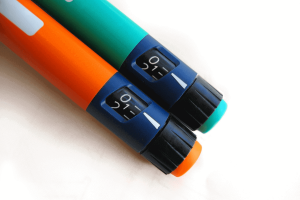
Diabetes and Common Skin Conditions
Diabetes is a disease that can affect the entire body. When most people think about complications of diabetes they think of kidneys, feet and eyes. However, diabetes can also lead to various skin conditions, ranging in severity. Here are a few of the most common diabetes-related skin conditions:
1. Acanthosis nigricans
This skin condition has a long and difficult name, but it’s one of the most commonly found in people with diabetes. Characterized by the darkening and thickening of the skin, this condition is caused by the rapid reproduction of the outside layer of skin cells. The most common reasons for development are obesity, too much insulin in the blood, and insulin resistance. Oftentimes, these darkened patches are found on the neck, armpit, and groin areas. This skin condition can be reversed and cleared up with proper medical attention.
2. Styes
Styes are considered a bacterial infection, affecting the skin on the eyelids. This condition causes a painful red bump to form. These bumps look similar to a pimple and in most cases disappear on their own. To relieve the discomfort from this condition, you could place a warm washcloth over your eyes, which will cause the inflammation to go down. Do not try to squeeze or pop the stye. Styes should go away within 48 hours, so if you have one that is stubbornly sticking around, speak with your doctor about treatment options.
3. Boils
Boils are an infection of hair follicles. This infection causes a painful, red, firm bump about the size of a pea. This bump is pus-filled, and may drain or ooze on its own. The most effective way of treating boils is to place heat over the area and drain the boil when it’s soft. With diabetes, it’s important to make sure that no other skin conditions develop while trying to clear up boils. If you find other infections or skin conditions tagging along with boils, speak with your doctor.
4. Carbuncles
Carbuncles are a deep infection of the skin tissue. This condition causes a red, inflamed, painful bump to form under the skin. Carbuncles can range in size from as small as a lentil to as large as a medium-sized mushroom. These are usually caused by the staph family of bacteria. People with diabetes are more susceptible to getting skin infections because their bodies have a harder time fighting these infections off. It’s important to be hygienic, stay on top of cleaning scrapes or cuts, and do not try to drain a carbuncle yourself. Sometimes they go away on their own, but if you’re someone with diabetes, it’s best to talk with your doctor.
5. Diabetic blisters
Diabetic blisters are most commonly found on the fingers, hands, toes, feet, legs, and forearms. These are the same as blisters from a burn or a rub, but in patients with diabetes. Oftentimes, these blisters are painless and go away on their own. The only time you would need to see your doctor for diabetic blisters would be if it were to turn red and hot to the touch. Maintaining your diabetes is going to be the best treatment for clearing up diabetic blisters. Keeping your blood sugar in the right range should cause them to go away over time.
Each of these conditions can be minimized by keeping your diabetes under control. Eating healthy and exercising regularly are your key to maintaining a healthy body on the inside and the outside. Proper skin care may also help prevent skin conditions relating to diabetes. You only get one body so it’s important to take care of it in order to prevent further damage.
Summary
Skin conditions relating to diabetes are very common. Many of them can be prevented or reversed by keeping your diabetes under control. If you are experiencing symptoms of a skin condition related to your diabetes, be sure to speak with your doctor about ways you can reduce or even get rid of the skin condition altogether.




